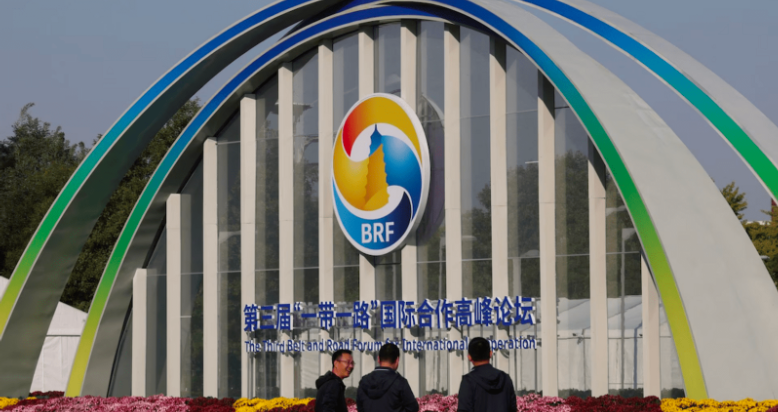Belt and Road Forum: More Than Infrastructure
The third conference of the Belt Road Initiative took place in Beijing. Photo: Edgar Su/Reuters
China continued its push for an alternative international environment at the third Belt and Road Initiative forum this past week. The conference took place from October 17 to 18, hosting two dozen world leaders and delegations from more than 100 countries, where they discussed the global infrastructure and development endeavor that began a decade ago. It was the largest and most important diplomatic event China has hosted since its severe lockdown protocol during the coronavirus pandemic.
The initiative revolves around connecting the Global South to the rest of the world and championing economic and infrastructure development, and has played a major role in cementing China’s international power and influence. However, with the 10th anniversary of the initiative in a turbulent and changing world, China looks to shift its plans.
When introduced ten years ago by Chinese President Xi Jinping, the Belt and Road Initiative garnered global support, with 152 signatories predominantly from Africa, Latin America, the Middle East, and Asia. However, most of Europe and the United States believed this to be a geopolitical power move, and Italy was the only Western country to join. Since 2013, the Belt and Road Initiative has funded over 3000 projects, with around $1 trillion for roads, railways, bridges, ports, and other infrastructure, most contributed by China.
Western countries were wary of the program, cautioning that it was a “debt trap” for developing countries and that it accelerated climate change. To a certain extent, this has proven to be true, as many countries such as Sri Lanka and Zambia have undergone debt restructuring due to an inability to repay their extensive loans. The excessive debt countries amassed has caused difficulties in development, but it also strains the Chinese economy and has contributed to some of the economic distress now plaguing China.
Entering the second decade of the initiative, this year’s forum proposed and examined some potential changes. The conference underlined the beginning of a new chapter of growth — the high-quality development period. In this next decade, the goals set are for smaller and more specific projects, increased green energy investments, and projects focused on company investment over loaning.
These modifications will help the world get back on track with climate change, lessen the burden on developing countries needing to repay loans, and help ensure that China does not lose money in the debt restructuring of the borrowers. The recently built high-speed railway system set up in Indonesia, funded by four state-owned Chinese railway companies, is the beginning of these investment projects. The updates focus on the adaptability of China and hide some of the strains arising from funding expensive projects.
China’s President Xi Jinping giving a speech at the Belt and Road Forum. Photo: REUTERS/Edgar Su
This conference comes during a difficult period for China, where slowing economic growth is stalling, or even reducing, investment in the initiative. Following these setbacks, Western countries began to strengthen ties with the Global South, beginning with the EU’s Global Gateway program in 2021 and the Partnership for Global Infrastructure and Investment plan brought to the G7 by the US in 2022. Both of these undertakings threaten China’s campaign to woo the Global South and further promote the US ‘de-risking’ plan to move away from dependence on China and dilute their economic sway.
Additionally, attendance at the forum decreased since the first forum was held in 2017, putting pressure on President Xi to demonstrate strength and stability. With the growing competition with the West to be the biggest investors, and thus most loyal partners, of developing countries, President Xi is deepening his ties with Putin. As the only global power that still maintains strong economic ties and open lines of communication with Russia during the Ukraine war, China is not willing to risk losing one of its closest friends and an ally in the struggle for world dominance.
This conference emphasized one main goal, among other upcoming changes: the desire for a new global stage. This has been a dominant trend throughout the entire initiative, as Xi is working to drive the Global South farther from the West. The biggest promoter of this alternate world structure is Russia’s president, Vladimir Putin, who was given a lavish welcome at the conference as the guest of honor. In addition to Putin, other high-profile leaders joined the conference, among which were the Prime Minister of Hungary and a delegation of Afghanistan’s Taliban. Most of the leaders present share grievances with Russia and China against the current Western-led global system.
In a world led by the United States for the past 30 years, China is using its Belt and Road Initiative to construct more space for a more diversified power structure. Through celebrating relations and economic goals, this conference set the stage to present the world with another option, one that promotes development and free trade over the norms and values presented by liberal democracies, such as human rights and territorial sovereignty.
In appealing to the support of the Global South, President Xi is promoting China as a pragmatic partner looking to build equal and mutually beneficial opportunities for development, despite any faltering within China. The current global landscape is filled with tensions rising and authoritarianism spreading, thus prompting President Xi to use this next chapter to intensify efforts to challenge the existing global system.


